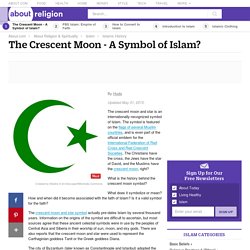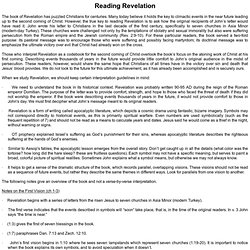

Religious Symbols - Is the Crescent Moon a Symbol of Islam. By Huda Updated May 31, 2015.

The crescent moon and star is an internationally-recognized symbol of Islam. The symbol is featured on the flags of several Muslim countries, and is even part of the official emblem for the International Federation of Red Cross and Red Crescent Societies. The Christians have the cross, the Jews have the star of David, and the Muslims have the crescent moon, right? What is the history behind the crescent moon symbol? What does it symbolize or mean? The crescent moon and star symbol actually pre-dates Islam by several thousand years. The city of Byzantium (later known as Constantinople and Istanbul) adopted the crescent moon as its symbol. According to some reports, they chose it in honor of the goddess Diana.
The early Muslim community did not really have a symbol. In later generations, the Muslim leaders continued to use a simple black, white, or green flag with no markings, writing, or symbolism on it. Sacred Texts Timeline. Sacred-textsSacred Time Origins of World Religions This is a timeline which gives the history of sacred texts, as well as a few other relevant events.

Of course, not all of the dates in this timeline are accurate; some are entirely conjectural. I have included a few dates, events and documents which are or may be entirely fictional. Links on this page are to resources at this site, not to external sites. I welcome feedback about any errors of fact in this timeline. For space reasons, I have used the abbreviations listed at the end of this file. Key to Abbreviations auth. = author. b. = born ca. = circa Can. = Canonicalization Cent.= century. Cod. = Codification. THE GNOSTICS AND JESUS. BY TIM KELLER, Redeemer Report, March 2004 Gospel of Thomas sounds far more misogynist than anything found in the Bible.

For some months I have been getting questions about the "Gnostic gospels" and The Da Vinci Code, so it seems right to give readers of this newsletter a bit of guidance. This is by no means a definitive response or analysis—it is more like pastoral counsel— but I hope it will clear up a few things. The Gnostics’ Jesus In 1945 a red earthenware jar was found buried near Nag Hammadi, a town in upper Egypt. The writings of Gnosticism were much wider than the Nag Hammadi texts, but what makes the NH texts different is that, as Craig Blomberg writes, they use the purported conversations of Jesus with his disciples as "little more than an artificial framework for imparting Gnostic doctrine.
" Library of World Religions and Faith Traditions. Written by the world's leading authorities on religion and spirituality, the Patheos Library offers the most accurate and balanced information available on the web.

In the column below, 50 major religious traditions are listed. For each, Patheos offers thorough, peer-reviewed, encyclopedic information that helps readers understand its origins, history, beliefs, rituals, ethics, and community structures. Click on the name of a religion to read in-depth articles. Use the Patheos Side-by-Side Lens to create an easy-to-read comparison chart for differing religious traditions. Choose up to three traditions from the scrollable lists to the right and then click Go! More Traditions Here are some important Traditions that help fill in the big picture — ancient religions, indigenous religions, non-religious "systems," and some additional traditions related to the Major Traditions in the main Patheos Library.
View More Traditions Origin Map Country Profiles Go Topics For Students For Teachers. The Nag Hammadi Library. Symboldictionary.net. Digital Dead Sea Scrolls. The Book of Revelation. Reading Revelation The book of Revelation has puzzled Christians for centuries.

Many today believe it holds the key to climactic events in the near future leading up to the second coming of Christ. However, the true key to reading Revelation is to ask how the original recipients of John’s letter would have read it. John wrote his letter to Christians in the last decade of the first century, specifically to seven churches in Asia Minor (modern-day ). These churches were challenged not only by the temptations of idolatry and sexual immorality but also were suffering persecution from the and the Jewish community (Rev. 2:9-10). Those who interpret Revelation as a codebook for the second coming of Christ overlook the book’s focus on the atoning work of Christ at his first coming. When we study Revelation, we should keep certain interpretation guidelines in mind: · We need to understand the book in its historical context. Notes on the First Vision (ch 1-3) Notes on the Second Vision (ch 4-11)